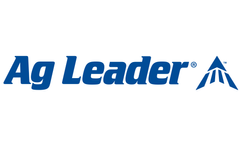Soybean Yield To Planting Articles & Analysis
24 articles found
When seed isn’t placed accurately in the trench, plants can be too close together or too far apart, both of which result in reduced yields. ...
Through collaborations with farmers around the US, we are building the world’s largest agricultural lab Indigo Research Partners with the goal of accelerating innovations that increase yields, improve environmental sustainability, and/or reduce risks for farmers. ...
So when he saw the opportunity to leverage Ag Leader’s Hydraulic Down Force system to prevent a common problem and improve his planting operations on acres where he plants cover crops, he jumped at the chance. ...
Biosolids are an important source of nutrients and organic matter, which are necessary for the productive cultivation of crop plants. Biosolids have been found to contain the personal care products, triclosan and triclocarban, at high concentrations relative to other pharmaceuticals and personal care products. The current study investigates whether exposure of six plant species (radish, ...
Although most of the growth in the world grain harvest since the mid-twentieth century is from the tripling of grain yield per acre, the 16-fold increase in the global soybean harvest has come overwhelmingly from expanding the cultivated area. While the area expanded nearly sevenfold, the yield scarcely doubled. The world gets more ...
Demand for soybean [Glycine max (L.) Merr.] with modified oil composition has led to the development of new soybean cultivars with reduced levels of linolenic acid. The objective of this study was to determine the effect of plant density on linolenic acid of soybean bred to have reduced linolenic acid concentration (30 g kg–1, ...
Peanut root-knot nematode [Meloidogyne arenaria (Neal) Chitwood or Ma] is an increasingly common pest in the southern United States where crops such as peanut (Arachis hypogaea L.) and soybean [Glycine max (L.) Merr.] are grown. Four soybean plant introductions (PIs) are highly resistant to the peanut root-knot nematode. To determine if PI 594403, PI 594427C, and PI 594651B contain useful ...
Past literature documents that domesticated soybean, Glycine max (L.) Merr., has trivial to almost nonexistent galactomannan-containing endosperm in mature dormant seeds. Current preliminary observations confirm limited endosperm for many domesticated soybean accessions, but show that many others have markedly larger endosperm, as do all wild (G. soja Sieb. & Zucc.) and semiwild (G. gracilis ...
Received for publication June 16, 2006. A field pot experiment was conducted to investigate the interactive phytotoxicity of soil Cu and Zn on soybean plants [Glycine max (L.) Merr.]. Two soils (Arkport sandy loam [coarse-loamy, mixed, active, mesic Lamellic Hapludalf] and Hudson silty clay loam [fine, illitic, mesic Glossaquic Hapludalf]) spiked with Cu, Zn, and combinations of both to reach the ...
We conducted an experiment to determine if greater tolerance to increased plant density and more efficient use of cumulative intercepted photosynthetically active radiation (CIPAR) partially explained the yield difference of two old soybean cultivars and two new cultivars. ...
Highest peak soybean aphid populations were 21,626 aphids plant–1 for infestations starting at V5, and 6446 aphids plant–1 for infestations starting at R2. Highest maximum aphid-days plant–1 recorded were 537,217 for V5-introduced soybean aphids and 148,609 aphid-days plant–1 for R2-introduced ...
Soybean [Glycine max (L.) Merr.] oil with oleic acid (18:1) content >500 g kg–1 is desirable for a broader role in food and industrial uses. Seed oil in commercially grown soybean genotypes averages about 230 g kg–1 oleic acid. Some maturity group (MG) II to V plant introductions (PIs) have elevated oleic concentrations of 300 to 500 g kg–1. Temperature of the growing environment during the ...
Highest peak soybean aphid populations were 21,626 aphids plant–1 for infestations starting at V5, and 6446 aphids plant–1 for infestations starting at R2. Highest maximum aphid-days plant–1 recorded were 537,217 for V5-introduced soybean aphids and 148,609 aphid-days plant–1 for R2-introduced ...
In high-yielding soybean [Glycine max (L.) Merr.] environments, N uptake during seed-filling may be constrained when the late-season decline in biological nitrogen fixation (BNF) is coupled with insufficient soil N. Three N-fertilization strategies were compared with a control (N0) on soybeans in 2006 and 2007 in a high-yield ...
The soybean aphid (Aphis glycines Matsumura) is a major soybean [Glycine max (L.) Merr.] insect pest. Soybean plant introduction (PI) 200538 has strong resistance to the aphid. The objectives of our research were to determine the inheritance of resistance and to map gene(s) controlling resistance in PI 200538. F2 populations developed from crosses between PI 200538 and three susceptible genotypes ...
Our objective was to determine the effect of soybean seed inoculation with Bradyrhizobium spp. and fertilizer N application rate on soybean productivity planted 1 and 2 yr after conversion to row crop production. ...
Planting date is a critical aspect of all soybean [Glycine max (L.) Merr.] production systems, but the response of yield to planting date fluctuates widely among environments. ...
A trend toward early planting of soybean [Glycine max (L.) Merr.] in Indiana results in higher yield, but the limit to which a positive response to early planting occurs has not been evaluated. Our objective was to determine how early planting affects yield components and seed composition of ...
Sclerotinia stem rot of soybean [Glycine max (L.) Merr.], caused by Sclerotinia sclerotiorum (Lib.) de Bary, is a difficult disease to manage, although some gains have been made through breeding for quantitative resistance. The objective of the present study was to map quantitative trait loci (QTL) controlling partial resistance to Sclerotinia stem rot from the soybean plant introduction (PI) ...
Soybean [Glycine max (L.) Merr.] production is limited in the northeastern United States so research on optimum planting date is scarce. Soybean production in this region may increase because of biodiesel demand so we initiated a 2-yr study in New York that compared soybean planting dates with and without ...





